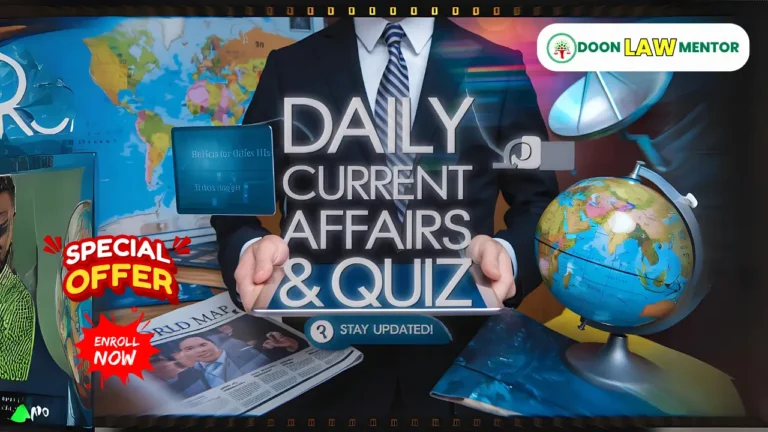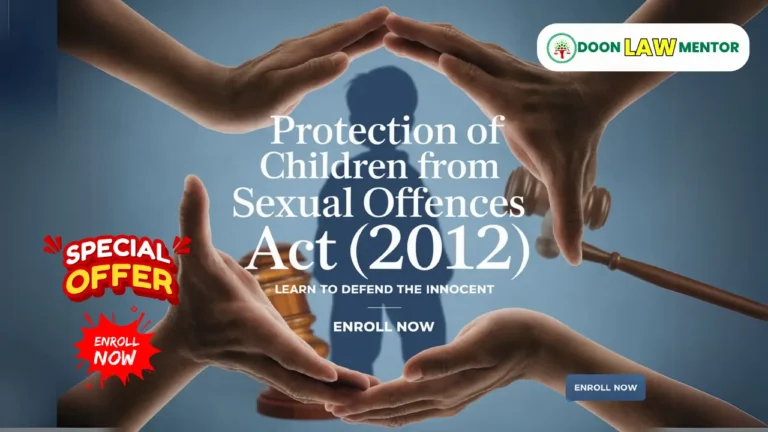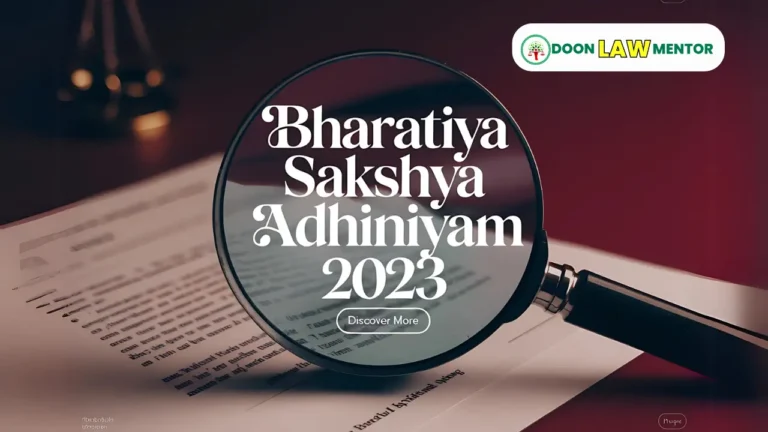Mob lynching in India remains a pressing issue in 2025, with the Bharatiya Nyaya Sanhita (BNS), 2023, introducing specific provisions to combat this crime. Despite legal advancements, social challenges like communal tensions, misinformation, and distrust in the legal system persist. This blog explores the legal framework, societal roots, and ongoing struggles to address mob lynching in India in 2025.
Table of Contents
Introduction
Mob lynching in India has emerged as a significant threat to the nation’s democratic fabric, challenging both its legal system and social harmony. Defined as the extrajudicial killing of individuals by a group based on rumors, prejudice, or perceived wrongs, mob lynching often targets marginalized communities, particularly minorities, Dalits, and lower-caste groups. In 2025, while the Bharatiya Nyaya Sanhita (BNS), 2023, has introduced specific provisions to address this crime, the persistence of communal tensions, misinformation on social media, and a lack of trust in the legal system continue to fuel such violence. This blog examines the legal and social challenges surrounding mob lynching in India in 2025, offering insights into the root causes, legal framework, and potential solutions, a critical topic for Judiciary, APO, and JLO aspirants preparing for 2025 exams.
Historical Context of Mob Lynching in India
Mob lynching in India is not a new phenomenon but has deep historical roots tied to social hierarchies and communal divides. Incidents like the Dadri lynching in 2015, where a Muslim man was killed over rumors of beef consumption, and the Palghar lynching in 2020, where two sadhus were brutally murdered based on false child-kidnapping rumors, highlight the recurring nature of this violence. Data from IndiaSpend indicates that between 2010 and 2017, 28 people were killed in 63 cow-related mob attacks, with a significant spike after 2014, often linked to cow vigilantism and religiously motivated violence. These incidents reflect a broader societal issue: a lack of faith in the legal system, leading communities to take justice into their own hands, often driven by mob mentality and prejudice.
Legal Framework in 2025: The Bharatiya Nyaya Sanhita (BNS)
In a significant step forward, the Bharatiya Nyaya Sanhita (BNS), 2023, which replaced the Indian Penal Code (IPC), 1860, and came into effect on July 1, 2024, introduced specific provisions to address mob lynching in India. Section 103(2) of the BNS defines mob lynching as a crime where a group of five or more individuals commits murder based on factors like race, caste, community, sex, language, or personal beliefs. The punishment is severe: death penalty, life imprisonment, or a minimum of seven years in prison, along with a fine. Additionally, Section 117(4) addresses cases where grievous hurt is caused during mob lynching, prescribing up to seven years of imprisonment and a fine.
The Supreme Court has also played a pivotal role in shaping the legal response to mob lynching. In the landmark Tehseen S. Poonawalla v. Union of India (2018) case, the Court described mob lynching as a “horrendous act of mobocracy” and laid down preventive, remedial, and punitive measures. These include the establishment of fast-track courts, the appointment of nodal officers in each district to monitor high-risk areas, and the immediate filing of FIRs in such cases. The Court also mandated victim compensation schemes and directed action against officials who fail to prevent such incidents.
Despite these legal advancements, enforcement remains a challenge in 2025. The National Crime Records Bureau (NCRB) has not recorded specific data on mob lynching since 2017, citing unreliable reporting, as many cases are logged as brawls or accidents. This lack of data hinders a comprehensive understanding of the issue, making it difficult to assess the effectiveness of the new laws.
Social Challenges Fueling Mob Lynching in 2025
The persistence of mob lynching in India in 2025 is deeply rooted in social issues that exacerbate communal divides and undermine the rule of law. Several factors contribute to this ongoing crisis:
1. Communal Tensions and Prejudice
Mob lynching in India is often driven by communal tensions, particularly targeting Muslims, Dalits, and other marginalized groups. Incidents like the Alwar lynching in 2018, where a Muslim man was killed on suspicion of cow smuggling, highlight the role of cow vigilantism and religiously motivated violence. In 2025, posts on X indicate a continued rise in such violence, with some users noting that 86% of victims since 2010 have been Muslims, often linked to the rise of Hindu nationalism since 2014. These acts are not just spontaneous but reflect deep-seated prejudices based on caste, religion, and class, perpetuating a cycle of marginalization and fear.
2. Misinformation and Social Media
The rapid spread of misinformation on social media platforms like WhatsApp and Facebook remains a significant driver of mob lynching in India. False rumors about child-lifting, cow slaughter, or theft often incite mobs to act without verifying facts. For instance, the Palghar incident in 2020 was triggered by a WhatsApp rumor falsely accusing two sadhus of being child kidnappers. In 2025, the problem persists, with rural communities particularly vulnerable due to low media literacy. A 2019 account from a police officer in Telangana revealed how WhatsApp videos alleging violence by a stigmatized tribal group led to widespread fear, averted only through proactive community engagement. Without robust measures to combat fake news, social media continues to fuel mob violence.
3. Distrust in the Legal System
A lack of trust in the legal system is a fundamental social challenge contributing to mob lynching in India. Many citizens perceive the justice system as slow, biased, or inaccessible, leading them to resort to mob justice. The low conviction rates in such cases—often due to threats to witnesses, political interference, or poor investigation—further erode public confidence. For example, in the G. Krishaniah case, the release of the main accused despite Supreme Court guidelines highlighted systemic failures. In 2025, this distrust persists, with some communities believing they must act as self-proclaimed justice providers, bypassing legal processes.
Legal Challenges in Addressing Mob Lynching in 2025
While the BNS has introduced specific provisions, several legal challenges hinder the effective curbing of mob lynching in India in 2025:
1. Implementation Gaps
Despite the Supreme Court’s 2018 guidelines and the BNS provisions, implementation remains inconsistent. Fast-track courts and nodal officers have been established in some districts, but their effectiveness is limited by political pressure, communal bias, and resource constraints. For instance, in the Palghar lynching case, proper investigation was delayed, eroding trust in law enforcement. In 2025, these gaps persist, with many cases still facing delays in FIR registration and investigation.
2. Lack of Specific Data
The absence of reliable data on mob lynching in India is a significant legal challenge. The NCRB’s decision to stop recording mob lynching data since 2017 due to inconsistent reporting means there is no clear picture of the scale of the problem in 2025. This lack of data hampers policy-making and the allocation of resources to high-risk areas, making it difficult to assess the impact of the BNS provisions.
3. Ambiguity in Legal Provisions
While Section 103(2) of the BNS is a step forward, it does not explicitly mention religion as a motivating factor, despite many mob lynching cases being religiously motivated. This omission can lead to ambiguity in prosecution, especially in cases driven by cow vigilantism or hate speech. Additionally, the requirement for prior sanction to prosecute public officials under Section 153A of the IPC (now replaced by the BNS) often shields perpetrators aligned with the ruling establishment, a challenge that persists in 2025.
4. Witness Protection and Conviction Rates
Prosecuting mob lynching cases remains difficult due to threats to witnesses, political influence, and evidentiary challenges. The low conviction rates—often below 10% in such cases—discourage victims’ families from pursuing justice. In 2025, the lack of robust witness protection programs and the influence of local power dynamics continue to undermine the legal process, allowing perpetrators to evade accountability.
Impact on Democracy and Social Fabric
Mob lynching in India in 2025 poses a grave threat to the nation’s democratic values and social fabric. It violates fundamental rights under Article 21 (right to life and liberty), Article 14 (right to equality), and Article 15 (prohibition of discrimination), as well as the Universal Declaration of Human Rights. Such incidents create an atmosphere of fear, particularly among minorities, leading to their marginalization and stigmatization. The Supreme Court in 2018 noted that mob lynching undermines the rule of law, a concern that remains relevant in 2025 as these acts challenge the principles of justice and fair trial.
Economically, mob lynching incidents deter foreign investment, with investors citing concerns over safety and security. Socially, they deepen communal divides, eroding India’s reputation as a diverse and inclusive society. The normalization of such violence, as seen in public lynchings where crowds watch without intervening, signals a dangerous shift toward a retributive society, where mob justice overshadows legal justice.
Steps Taken and Proposed Solutions
Addressing mob lynching in India in 2025 requires a multi-pronged approach that tackles both legal and social challenges:
1. Strengthening Legal Enforcement
The BNS provisions must be rigorously enforced, with fast-track courts expediting trials and ensuring convictions. Nodal officers should be empowered to act swiftly in high-risk areas, and disciplinary action against negligent officials, as mandated by the Supreme Court, must be strictly implemented. The National Federation of Indian Women’s 2024 public interest litigation highlighted the need for states to file compliance reports on mob lynching measures, a step that should be prioritized in 2025.
2. Combating Misinformation
The government must collaborate with social media platforms to curb the spread of fake news and hate speech. Initiatives like the Telangana police’s 2018 “focused deterrence” model, which combined community engagement with swift legal action, can be scaled up. Public awareness campaigns on media literacy should be launched, especially in rural areas, to prevent the spread of rumors that incite mob lynching.
3. Building Trust in the Legal System
To restore public faith, the legal system must ensure speedy trials, transparent investigations, and victim compensation. The BNS’s provision for free legal aid to victims or their kin under the Legal Services Authorities Act, 1987, should be widely publicized and implemented. Addressing political patronage by holding leaders accountable for inflammatory statements can also reduce impunity.
4. Promoting Social Harmony
Interfaith dialogue, education, and social awareness campaigns can help break down prejudices based on caste, religion, and class. Schools and community programs should emphasize India’s values of tolerance and diversity, countering the mob mentality that fuels mob lynching in India. The Supreme Court’s directive to prevent hostile environments against affected communities, including economic and social boycotts, should be actively enforced.
5. Collecting Reliable Data
The NCRB must resume collecting specific data on mob lynching in India, ensuring accurate reporting to inform policy decisions. This data can help identify hotspots, allocate resources, and evaluate the effectiveness of the BNS provisions in 2025 and beyond.
Relevance for Judiciary Aspirants
For Judiciary, APO, and JLO aspirants preparing for 2025 exams, understanding mob lynching in India is crucial:
- Prelims: Expect questions on Section 103(2) and Section 117(4) of the BNS, the Tehseen S. Poonawalla case, or states with anti-lynching laws (Manipur, West Bengal, Rajasthan).
- Mains: Discuss the balance between legal enforcement and social reform in addressing mob lynching, referencing Article 21, Article 14, and the Supreme Court’s guidelines.
- Interviews: Highlight the need for judicial oversight and social awareness to combat mob lynching, citing its impact on democracy and human rights.
Conclusion
Mob lynching in India in 2025 remains a complex challenge, rooted in communal tensions, misinformation, and a lack of trust in the legal system. While the Bharatiya Nyaya Sanhita, 2023, has introduced specific provisions to address this crime, legal challenges like poor implementation, lack of data, and low conviction rates persist. Social challenges, including prejudice, mob mentality, and political patronage, further complicate the issue, threatening India’s democratic values and social fabric. A holistic approach—combining legal enforcement, social awareness, and misinformation control—is essential to curb mob lynching and uphold the principles of justice and equality. For legal aspirants, this topic underscores the judiciary’s role in safeguarding human rights and fostering a just society.
Want to stay updated on legal issues like mob lynching in India? Join Doon Law Mentor’s Courses for expert guidance. Follow @doonlawmentor on Instagram for the latest updates!
FAQs
- What is mob lynching in India?
Mob lynching in India refers to the extrajudicial killing of individuals by a group based on rumors, prejudice, or perceived wrongs, often targeting minorities and marginalized groups. - What legal provisions address mob lynching in India in 2025?
Section 103(2) and Section 117(4) of the Bharatiya Nyaya Sanhita, 2023, address mob lynching, prescribing penalties like the death penalty, life imprisonment, or seven years in prison. - What are the social causes of mob lynching in India?
Communal tensions, misinformation on social media, distrust in the legal system, and prejudices based on caste and religion are major social causes. - How does mob lynching impact India’s democracy?
It violates Article 21 (right to life), erodes the rule of law, and creates fear among minorities, undermining democratic values. - What did the Supreme Court say about mob lynching?
In Tehseen S. Poonawalla v. Union of India (2018), the Court called mob lynching a “horrendous act of mobocracy” and laid down preventive, remedial, and punitive measures. - Why is social media a challenge in addressing mob lynching?
Fake news and rumors on platforms like WhatsApp incite mobs, as seen in the Palghar lynching case, due to low media literacy in rural areas. - What are the legal challenges in curbing mob lynching in 2025?
Challenges include poor implementation, lack of specific data, ambiguity in laws, and low conviction rates due to witness threats. - Which states have specific anti-lynching laws in 2025?
Manipur, West Bengal, and Rajasthan have enacted specific laws against mob lynching, with West Bengal prescribing up to the death penalty. - How can India address mob lynching in 2025?
By strengthening legal enforcement, combating misinformation, promoting social harmony, and collecting reliable data on mob lynching. - Why is mob lynching a key topic for Judiciary aspirants?
It involves constitutional rights, legal reforms, and social justice, making it relevant for prelims, mains, and interviews in 2025 exams.
#MobLynchingIndia, #LegalChallenges2025, #SocialJustice, #BharatiyaNyayaSanhita #doonlawmentor








